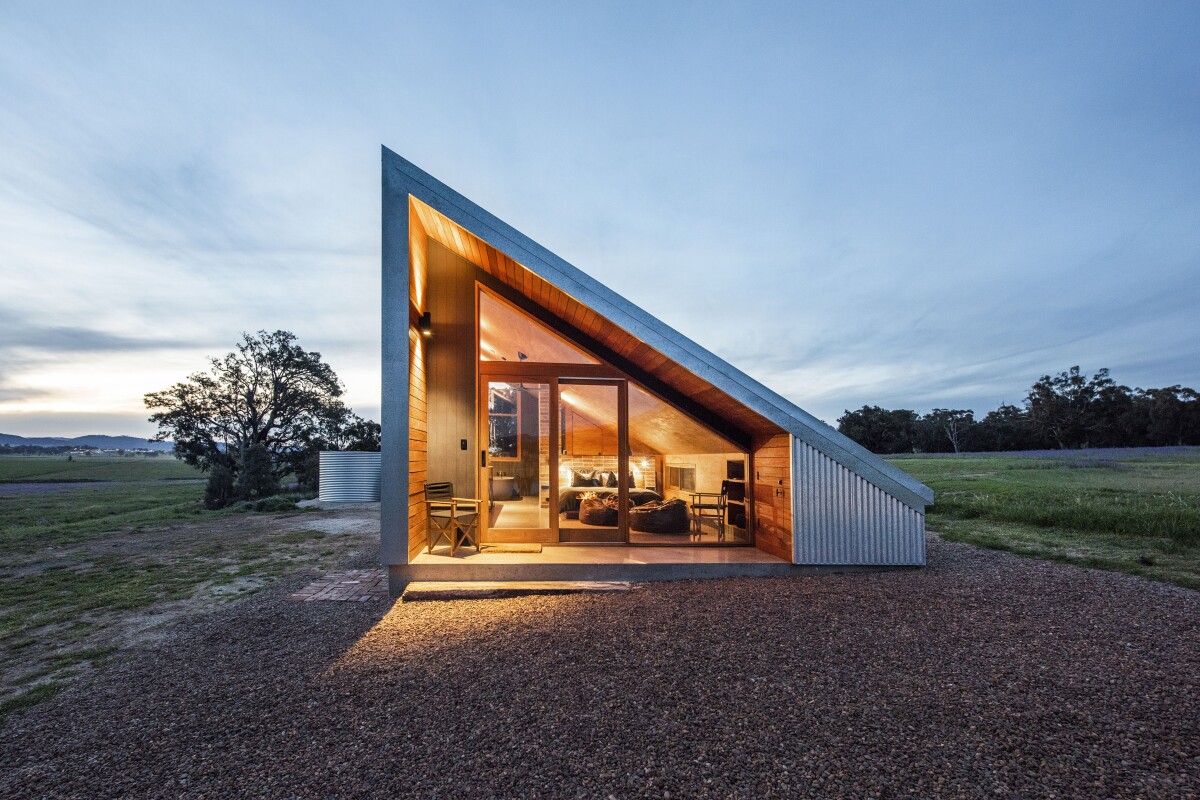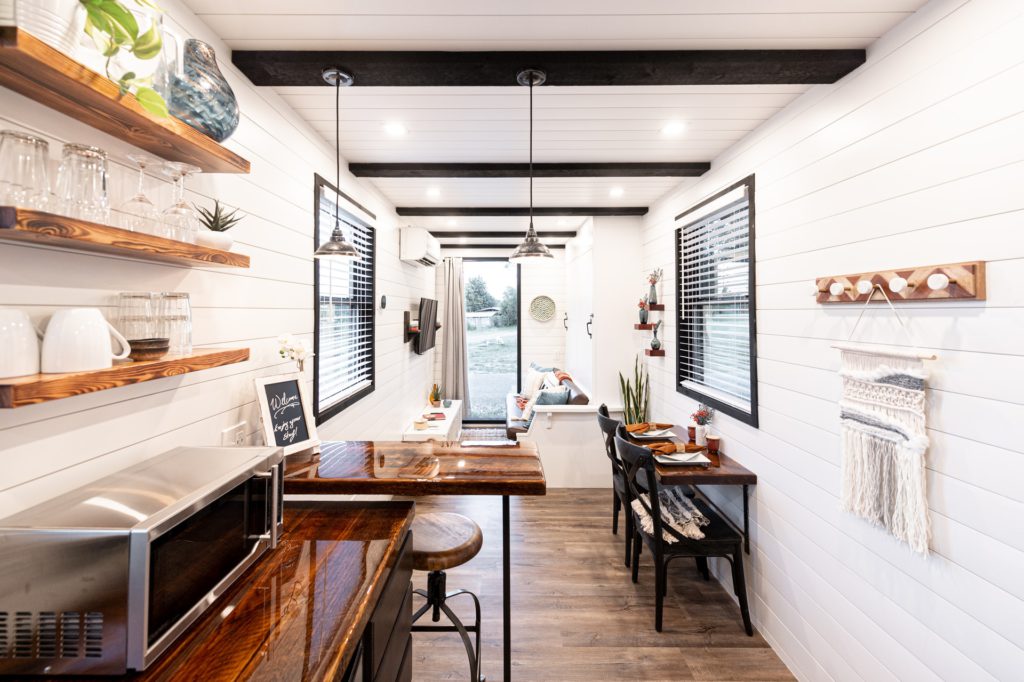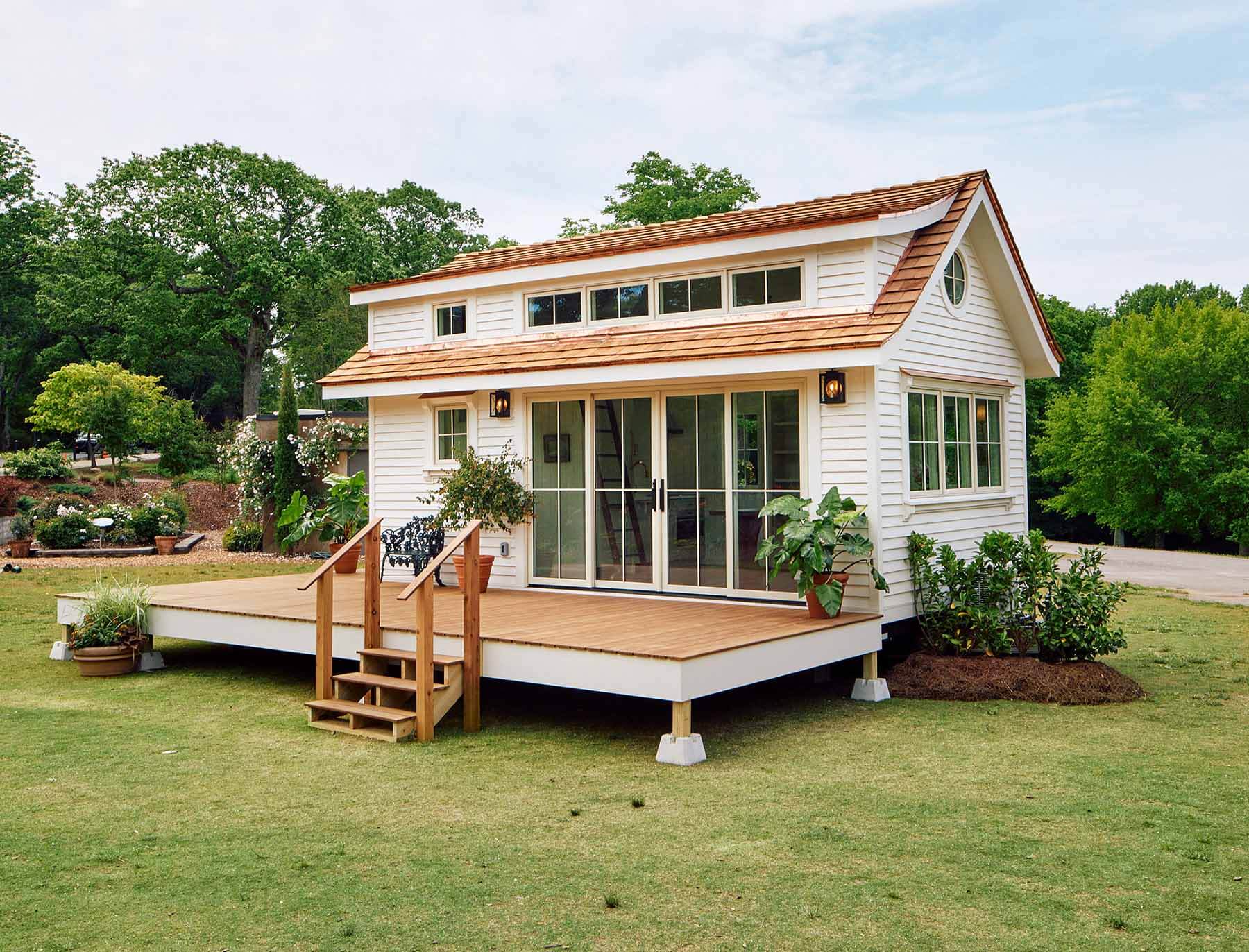You’ve no doubt heard about the tiny house movement. Over the past decade, more of us around the world have turned to these small living spaces to reduce energy usage and eventually, cut costs.
Even Elon Musk has had his attention captured. The Tesla/Space X chief reportedly sold off six of his seven homes in exchange for a tiny house measuring less than 40m² in Boca Chica, Texas. So aside from being absolutely adorable, these homes are also catching on for their eco-friendly nature.
While living minimally preceded the humble efforts of modern multibillionaires, it didn’t quite gain traction until after the financial crisis of 2007/8, where the demand for affordable housing expanded.
It was then reinforced in 2013 when the city of Austin, Texas promoted it as a housing solution for their homeless population. With affordable and sustainable design, the tiny house seemed like a smart way for anyone to live.
With the size of Australian single-family homes rapidly increasing over the years to an average of 235.8m², we’ve even surpassed America in our efforts to live bigger. And what that does is enlarge the gap between those who have and those who have not.
So there’s no surprise it’s taken off here—the housing market prices have been soaring and frugal living in Australia is proving harder than ever.
The impact of Covid has instilled doubts in housing affordability, and as we grow more conscious of our consumerism, some of us are pausing to reevaluate our lifestyle and its effects on the planet.
Can we live smaller? Can we consume less?
So to explore whether tiny home living is for you, here’s some background on how the trend flourished and all the benefits and hardships you need to know.
Related articles:
- 5 Ways to Build a Home for Cheap
- How Much Does it Cost to Build a Granny Flat?
- 7 Small Space Living Ideas from Interior Designers
What counts as a tiny house?

A tiny house usually maxes out at 37m². That’s a maximum! They are a construction on a land, just like a house, or can be built on wheels (Tiny Houses on Wheels).
You also have small houses which are 90m² or less. This is almost half the size of your average apartment in Australia.
Why are tiny homes so popular?

Tiny houses are attractive for a variety of reasons:
Affordability: coming in at about $3000 to $5000 per m² for the build, the small/tiny home is a lot cheaper than buying a city home.
Sustainability: energy consumption in housing is one of the biggest causes of greenhouse gas emissions globally. When you downsize, you simply use less—fewer lamps, less heat, and less air conditioning.
Lifestyle design: we’re not the first in saying tiny houses aren’t just homes, they’re a lifestyle. When you commit to small living, you’re committing to more financial freedom, fewer material things, and environmentally friendly living.
Potential for extra income: if you’ve got a plot of land and can fit two separate homes on it, there’s the possibility of renting that second unit out and earning cash on the rental payments.

Living off the grid: if your fantasy is to live like Walden, this can become a reality with a tiny house. The small area can be powered solely by harnessing the sun’s energy with solar panels, allowing for more self-sufficiency.
Many admit to a complete revamping of their consumer behaviours after moving into a tiny home. Because the space is smaller, they buy fewer things.
Their habits are more attuned to caring for the environment through recycling, purchasing and eating locally.
What’s the best design for a tiny house?

The modern tiny house will have all the necessary amenities that you’d find in a typical home, but in compact solutions. Here are a few tips to designing the layout for a functional tiny house.
1. Build smart
This is crucial in all layouts but especially for tiny homes. Each square centimetre counts here. Look at doors, for instance, which traditionally take up space in their natural swing. Here, you’d opt for a sliding door, and only when absolutely necessary.
Stairs are usually a necessary feature to access the second floor, but can be made into a storage component as well.
Also try to maximise on windows to create an extension of the home to the outdoors, making it feel bigger. Just be wary of overheating in the summer. Check out our guide to home orientation.
2. Don’t think everything needs to be smaller
/cdn.vox-cdn.com/uploads/chorus_image/image/58059129/the_gypsy_mermaid_8.0.jpeg)
You want to be able to live sustainably in your tiny home, and that means living comfortably . So instead of shrinking the size of your bedroom or bathroom, opt for compact, multi-functional pieces.
There are many bed options out there with storage options, or a desk that’s also a bookshelf, or a wall that’s also a bench. All fantastic options for a tiny house and every other size!
3. Choose the right foundation for you
The foundations of a tiny home are just as important, with the option of wheels or skids or stilts. The former, known as Tiny Houses of Wheels (THOW) or caravans, are all the rage, boasting flexibility and freedom to move the home with you.
Not to mention you don’t need a building permit, saving time and money in the process.
As much as your foundations need attention, your roof does too. Shipping container homes are a solid, cost-effective option, but contact local suppliers to find out what kind of roof is best for your needs and your environment. A flat roof may be at risk of water accumulation and leaking.
4. Consider sustainable materials
In a tiny house, every surface counts from the outside in. So when building, look to the expertise of architects who have paved the way in innovative use of construction materials.
Like the windows we talked about earlier, these can be a gateway into massive cuts in energy costs.
Almost half of the energy you’ll use in your home will be to cool it or heat it, and your windows are able to keep you more temperate throughout the seasons.
5. Don’t forget to check your state laws
From the weight of the house to the transportability and dwelling codes, there are a few things you need to consider. And they vary by state. Check regulations by contacting your local council before moving forward.
Building a tiny house
So many Australians have been charmed by the simple, eco living that tiny houses offer that you can locate quality building services throughout the country.
You’ll find kit homes that offer amazing tiny house options in an assembly pack that you can DIY! Imagine that. These homes are built as their own place of residence or as an extra granny flat that can be rented out short-term.
What’s difficult about living in a tiny house?

Now that we’ve touted all the economical and environmental benefits of living in a tiny house, we should tell you it comes with its challenges.
Less storage
While you might be able to reduce your closet needs drastically, this also applies to everything else in your homes.
From books to toiletries and groceries, you’ll have less room for everything. And with a small fridge, you may have to make more frequent trips to the shops for your cooking supplies.
Fewer appliances
This tough living aspect applies particularly to your washer-dryer. It takes up ample room and if you’re not willing to forgo that space for them, you’ll need to do your washing at a laundromat.
Also, you have to think about power, how much you have and where you’re going to get it. A lot of tiny houses use solar panels to provide power.
Entertaining
/carrie-dan-extra-wide-tiny-house-mitchcraft-tiny-homes-6-7751f61ef7eb422895564f2b9bd8f3b0.jpeg)
This becomes much more difficult in a tiny home because of… you guessed it—space! Accommodating a couple of guests in a little living area is challenge enough.
Work through this by making your outdoor space just as much a part of your home. Summer will be your busiest season with those backyard get-togethers.
Many dwellers in tiny homes take advantage of the local park to host instead.
Doing your business
Many tiny homes on wheels use composting toilets, which means they’re not connected to local sewers or septic tanks. The compost material breaks down solid waste using an oxygen-rich environment. A fan is usually installed, which ensures there’s not port-a-potty smell.
While this isn’t necessarily a downside, it is a new way of living for most. The compost from the toilet will need to be emptied on a regular basis of once every 3-6 weeks.
Frequent cleaning
When in a small space, the dust and dirt accumulates easier and faster. So while there is less maintenance needed for fixtures or appliances, you’ll need to spruce it up more often with cleaning and tidying.
Parking

If you’re living in a mobile tiny house, you won’t be driving the whole time. In that, you’ll have to find a place to park and probably pay for it too.
Of course, you could also park your tiny house in your backyard if that’s an option.
Sleeping lofts are cosy but tight
Even with the most amazing tiny house, you might feel a little cramped.
Many tiny houses are outfitted with sleeping lofts for space-efficient design but be warned, changing your sheets will be tough because you can’t stand fully upright.
Want to learn more?
If you haven’t decided if tiny houses are for you, keep browsing our search page to check out all kinds of amazing properties available right now. But don’t just stop there, download our app to get the full Soho experience. Just remember to shortlist or swipe left on our listings so we can send you others that better match what you’re looking for.














